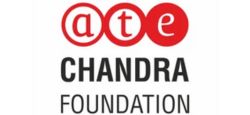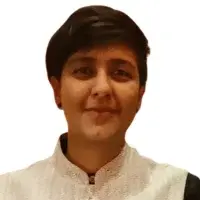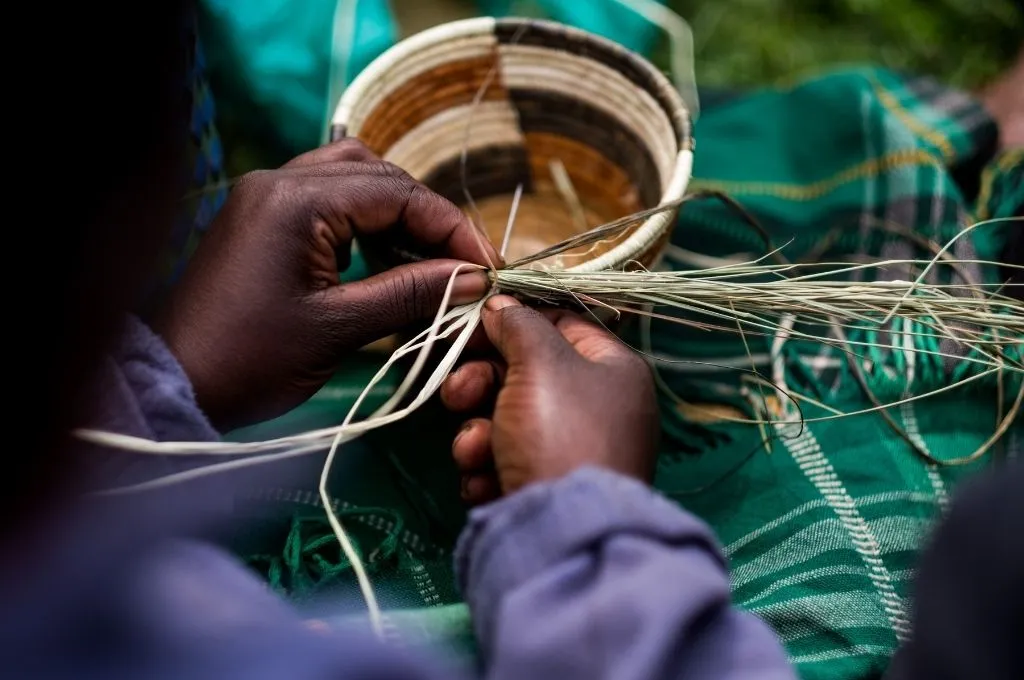How often do you find yourself wishing you could pull up comprehensive data points about your programmes and their impact over time? Could you imagine this exercise as being efficient and effortless? How much easier would it make scale, programme design, or even reporting? What about all the time and money you would save?
Rubina Nafees Fatima found herself asking the same questions repeatedly. And then she decided something had to be done about it.
Data is an integral resource for nonprofits, yet many struggle to inculcate robust data management practices. To better understand the potential that effective and efficient data management offers, the factors that enable it, and the challenges to adopting these practices, we spoke with a nonprofit that has spent the last four to five years building its data practices.

SAFA is an organisation working on education, skill training, livelihoods, and access to entitlements for women and youth in Hyderabad’s informal settlements. Since its inception in 2006, the organisation has significantly overhauled its data management system. Rubina, the organisation’s founder and director, stresses that this was the result of a long and arduous journey.
The organisation had long been aware of its need for a robust management information system (MIS). In 2017, it approached companies that specialise in developing such software for nonprofits. However, SAFA couldn’t afford the quoted costs. The organisation subsequently attempted to bring technical staff on board to achieve its data management goals, but this strategy didn’t work as the quantum of work was too large to be handled by a single resource.
By 2020, SAFA was engaged in multiple projects, but none of the data they had collected had been consolidated within the same system. “The burden of having to collate all this data would fall upon our programme managers, especially during midterm reviews. There was so much data, and everything was in a different format. Nothing felt in sync,” says Rubina.
When working with larger partners, the organisation would feel a distinct gap in tech capacities. Elaborating on this, Rubina says, “Many partners required us to use their MIS for projects that we worked on together, and the ease of working on such systems stayed with me. When I met with other CEOs and saw the complete overviews and well-designed dashboards they were operating with, I aspired to being able to utilise similar resources. In fact, I even asked them if we could continue to use their MIS. But this request either had to go through bureaucratic structures or the product was found to be unsuitable due to server compatibility issues.”

Taking the next step
Given the need for a better system, SAFA knew that the time for change was imminent. Before beginning to develop it, however, the organisation took some time to identify the gaps that it wanted the system to address. It found that many of its outreach workers were still using physical registers to record all the recipient data they were collecting. Meticulously maintaining these registers and digitising the data was a significant time investment. Additionally, Rubina noted that the number of individuals signing up for SAFA’s various training programmes often exceeded what the organisation could accommodate. “We’d have 500 walk-ins for a 100-seater. I kept wondering what happened to the 400 who were left out. They had taken the trouble of walking to our unit, which means that they needed the services we were offering. So, how do we track them and ensure that our services reach them as well?”

This exercise helped the organisation understand the tremendous value that a robust MIS could offer. It aggregated the data of all the people who visited its centres and applied for Genpact’s Better World Initiative, which aids nonprofits with digital transformation. Upon getting selected for the initiative, a senior management team member from SAFA spent six months learning from the Genpact team and developing an MIS using Google Data Studio and Power BI.
What did the new system offer?
The new system changed everything for SAFA. All the data collected was now stored within the system. Depending on the project for which it was collected, each individual’s data comprised anywhere between 15 and 30 data points. Data collection occurred through Google Forms or physical forms filled out when individuals visited any of the organisation’s centres. Any non-digital data is later digitised and entered into the system. Rubina mentions that this data entry process generally takes up 10–15 percent of a team member’s daily time. Once entered, this data becomes a part of SAFA’s dashboard, which serves a variety of functions.
The system enables team members at SAFA to obtain a snapshot of any datapoint collected across the various projects they’re working on. For instance, if they’re working on mobilising self-help groups (SHGs) in Hyderabad, there may be many women who have previously filled out questionnaires and could potentially qualify for this intervention. However, SHG formation in Telangana requires that SHG leaders live in homes that they own. Since home ownership is one of the data points captured in the forms, the team can easily parse through the data to determine how many women in the database own homes.
This data also helps the organisation with advocacy further down the line. For example, if 850 out of the 1,000 women in their database are found to be living in rented homes, SAFA has the data to substantiate that amending the policies governing SHG formation would have a much greater impact on the lives of women in state.
Most importantly, however, SAFA’s access to data enables it to tailor the support that it provides to the communities it works with. Rubina recalls a recent instance of this: “We provide revolving capital of up to INR 10,000 for small businesses. So, in our forms, we inquire about the amount of capital required. At a recent meeting, however, the person in charge of data analytics showed us that most people are asking for more than INR 20,000. She said that our limit of INR 10,000 is therefore outdated and may not be meeting the needs of the microentrepreneurs we are looking to support. Given that we have the data to back this claim, we are now figuring out how we can increase this limit.” The integration of the MIS into their daily operations has therefore ensured that their decisions are data-driven, addressing urgent needs based on information directly provided by the community.
What barriers did they face along the way?
In the early days of its adoption, ensuring a smooth transition to the use of the MIS was a major challenge. “We have 19 project leads. Approximately 80–90 percent of them have only been social workers and come from modest backgrounds. So using technology and understanding English can be a challenge for them. Given how integral they are to our organisation, we knew that we had to make the system as user-friendly as possible,” says Rubina. The leadership also recognised that the transition cannot happen overnight, and there should be no expectation that they immediately take to the technology.
Once you establish a clear link between the impact of social work and the use of technology, it’s much easier for team members to embrace it.
To help bridge this gap, SAFA conducted numerous capacity-building sessions to train the staff in the use of the system and emphasise its importance across all levels of the organisation. These sessions are not limited to the use of technology. Rather, technology use is interwoven into broader themes that the team identified as capacities during the needs assessment that was conducted prior to training. Rubina explains, “We asked the team what capacities they would like to train. Some said leadership, others said time management or teamwork. So, we decided to integrate the technological skills required to use the new system within these topics.”
To ensure that the training sessions were appropriately designed, the organisation outsourced this responsibility to carefully selected consultants with a background in development. SAFA also enlisted the services of Clanwin Solutions, a company that specialises in capacity building. “Once you establish a clear link between the impact of social work and the use of technology, it’s much easier for team members to embrace it. It has to be incorporated into their work for that culture to truly take hold,” says Rubina.
Building a second line of leadership is also something that the organisation is actively working towards, and those who adapted easily to this transition are at the forefront of the proposed leadership group of the future. Rubina says, “Their excitement is palpable every time you talk to them about it (the technology). They know that these competencies they are developing not only help their work here but also benefit their overall careers.”
In addition, the adoption of technology has resulted in the organisation positioning itself in a different light, especially during the hiring process. According to Rubina, the organisation now uses terms such as ‘data-driven’ and ‘structured programmes’ very consciously during recruitment. She adds, “We’ve always found it challenging to hire—apart from the fact that people don’t want to enter the social impact space, we very prominently work with minority communities in Hyderabad, which isn’t really the most glamorous prospect. Although we used to take in people with only a little bit of knowledge about Excel and MS Office, we now emphasise the role that data management plays in our organisation and hire those with a certain degree of technological proficiency as well as the enthusiasm to keep learning.”
What impact has this had?
Besides transforming the way the organisation approaches its programmes by enabling the team to parse through significant amounts of data, the adoption of the improved data management system has also had beneficial ripple effects for SAFA’s staff. Rubina elaborates, “Many of them have continued to learn and build their skill sets. They have even realised that there are other tools they could learn to maximise the utility of our MIS and are working on acquiring those skills in addition to improving their English proficiency. All of this has been inspired by their own zeal to continue the learning that started with adopting the new system.”
Using the data, the organisation can now easily calculate the social return on investment of their initiatives. Rubina explains with the help of an example from their work on enabling access to entitlements. “We help people get their documents in order and apply for elderly pensions and widow pensions if they are eligible. With the help of our dashboard, we can follow up and find out whether the pension has been credited to their account. Once it has, we are able to calculate how much money they saved compared to doing the entire process themselves, which is an expensive and time-consuming endeavour. It’s very easy for us to calculate this now. In some places, we are showing an 11x return on investment for each rupee a partner spends with us.”
Interestingly, Rubina now finds herself on the other side of the situation that she was in half a decade ago. “We had a meeting with a larger partner and presented our MIS to them. They were so impressed that they asked us to do a demo for the other nonprofits they work with. It was a proud moment for us. Now, others are approaching us with the hope that we’ll share the software with them. It’s a decision we’re still struggling with because we want to ensure that if we do share it, it’s done in the right way.”
Based on SAFA’s nearly two-decade journey in the social impact space, Rubina has advice for nonprofits looking to strengthen their processes and impact, as well as for the funders who can enable them to do so.
Advice for nonprofits
1. Take care of your talent
For any big transition to succeed, an organisation needs a team that is committed to and enthusiastic about learning. Rubina emphasises that nurturing these traits necessitates valuing and addressing feedback. “An important question that many of our partners asked us is, ‘How many of your organisational staff have stayed for more than five years?’ Funders tend to trust organisations that are able to retain talent. We contemplated what helps with talent retention and realised that building capacities and a nurturing organisational culture are important determinants.”
2. Don’t be afraid to have difficult conversations
Capacity building is critical for many nonprofits, yet funds are often directed towards programmes alone. Recognising this disparity, Rubina highlights the need for a shift in how grantee organisations interact with funding partners. “If you want output-driven results from us, then invest in us. This is the conversation that nonprofits need to be having with their [funding] partners. Ask multiple partners for this support, in fact.” In keeping with this sentiment, the organisation has begun to factor technology costs into its budget.
Advice for funders
1. Invest in capacity building
Funders want results but may overlook the need for investing in building the capacities that lead to those results. Nonprofit partners can only deliver if their teams are adequately equipped to execute their various functions. Rubina indicates that while nonprofits should be unafraid to ask for capacity-building support from funders, the latter should also proactively fund the same. She says, “If you want shining reports with extremely robust data and evidence, why not invest in your partners as opposed to only investing in their programmes?”
2. Ask your partners what support they need
Rubina stresses that it is crucial for funders to understand what support their nonprofit partners need by asking them, rather than applying their own lens. The latter approach can often lead to the imposition of solutions that do not meaningfully address the needs of nonprofits.
“When your nonprofit partner says they need capacity building support, it doesn’t necessarily mean they want their employees to learn how to use AI. Listen to them to understand what their problems really are, and offer solutions that fit their context.”
What lies ahead?
Rubina hopes for advocacy to be a key cog in the organisation’s operations going forward. Talking about SAFA’s recent work on premarital education, she says, “Once we have enough data about the number of people who have attended these programmes, we can demonstrate the need for premarital education to the government and recommend the drafting of a policy around it.”
“In the future, how do we plan, and what do we plan? How solid is our intervention? We know that we our reducing our chances of failure if we continue to pursue data-backed initiatives. So, we need to continue doing that while factoring in these questions,” she adds.
—
About Rubina
Rubina Nafees Fatima is the founder and director of SAFA, a Hyderabad-based nonprofit that works with women and children from marginalised communities. A non-conformist entrepreneur and passionate advocate for women’s agency and freedom, she founded SAFA after a failed startup and a successful venture. Rubina aims to be part of a larger collective of Muslim women creating stories that challenge stereotypes and shape history. Her academic background includes economics, statistics, and social work.
—
Know more
- Read this case study on the importance of developing robust M&E systems as a grassroots nonprofit.
- Read this report on the need for funding nonprofit capacity building.
Do more
- Funders who are interested in supporting capacity building for nonprofits can read more about the GROW Fund, Rebuild India, and SVP Support.






